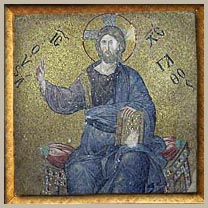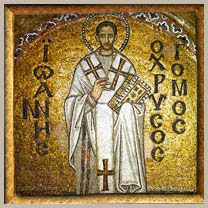This another page from my Hagia Sophia webite that will be of interest to anyone who is interested in the church of the Theotokos Pammakaristos.
Palace of the Facets
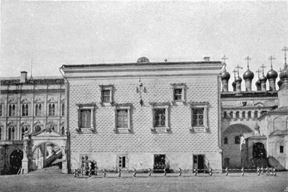
The Palace is so called because, on the East side, the stones of the exterior wall are cut and pointed in a diamond shape, in imitation of that which one sees in Italian palaces. The entry door shows a magnificent gilded frame. The palace lets in light from a double set of windows on three of its sides. The interior is completely covered in paintings and here also one find the Imperial Throne. The ceiling vaults terminate in the center atop en enormous square pillar.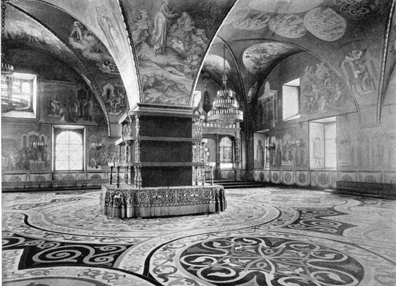
During the first years after its completion this palace was called simply "The Great Palace". There was not, in the example of the ancient gridni of the Grand Dukes (audience halls) such that the first room of the palace was the principal site for the exceptional ceremonies. The Tsar, after his coronation, where here receive congratulations and here he would give a banquet after the holy offices; here he proclaimed the Tsarevich heir presumptive to the Throne; here he consecrated the Patriarchs, Metropolitans and Archimandrates; here he held the great territorial assemblies (zemskie sobory) and it was here that they held the great receptions for the Ambassadors.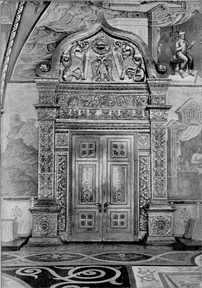 In 1552 Ivan the Terrible celebrated the taking of Kazan in the Palace of Facets. In 1602 Boris Gudonov gave the magnificent banquet here for Prince John of Denmark, fiance of his daughter Princess Xenia.
In 1552 Ivan the Terrible celebrated the taking of Kazan in the Palace of Facets. In 1602 Boris Gudonov gave the magnificent banquet here for Prince John of Denmark, fiance of his daughter Princess Xenia.
The council regardingthe annexation of Little Russia was held here and Peter the Great celebrated the victory of Poltava here.
Since the 19th century the Palace of Facets has served as the dining hall for the Tsar after the coronation ceremonies.
During the four centuries of the Palace of Facets' existence its smaller windows have been changed many times in shape and size. Today they are notably wider. Nevertheless, as a whole the Palace retains its ancient appearance.
The Imperial Throne here has always remained in the same place.
Wooden banquettes are placed on platforms along the entire length of the walls of the hall, and are upholstered in multicolored fabric (from the Sapoynikiv factory), with gold fringe along the bottom.
Around the central pillar there is a sideboard with four shelves, which during the Imperial stay, in accordance with the ancient tradition, hold lavish vessals in gold and silver, which are otherwise usually kept locked in the Armory Palace.
Eighteen windows of differing sizes and different forms light the hall from three sides.
Four massive chandeliers and eight hanging lamps are lit at night.
Here are the subjects of the mural paintings (These are the same subjects of the time of Tsar Fyodor Ioannovich, when they were first painted)
- On the vaults are portrayed the Days of Creation, Paradise and Man chased out of the earthly Paradise. Next to the Imperial Throne one sees the Dream of the Prophet Daniel and Jacob's Ladder.
- On the south wall, Moses and the bullrushes.
- Painted on the Vaults, the Patriarchs of the Old Testament, the Evangelists and the Prophets.
- On the North and East walls are painted the story of Joseph. Closer to the throne, above, as well as on the South wall below shows the history of Russia. Above, on the arches of the vaults, Moses in front of the arch of alliance, David accused by the Prophet Nathan, King Solomon in the Temple.
- On the West wall, the Parables, one of the Justice of Solomon and the other the Punishment of the iniquitous judge.
- On the window surrounds are the effigies of the Grand Dukes of Russia.
- The Palace of Facets creates a very strong impression by its original appearance and grandiose beauty, good yet simple.
